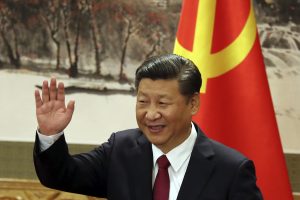The Beidaihe meeting, or “summer summit,” is held in early August each year. This year it took place ahead of the National Congress of the Chinese Communist Party (CCP), due to take place in the fall. Especially in a year like this when personnel appointments are made – something that happens only once every 10 years – many observers pay close attention to what might have taken place in Beidaihe. In fact, during the transition from the Jiang Zemin administration to the Hu Jintao administration, the decision to retain Jiang Zemin as Chairman of the Central Military Commission was believed to have been made because of the Beidaihe meeting.
Beidaihe is a summer resort facing Bohai Bay. From the late Qing dynasty to the Republic of China, it was a popular summer resort for foreign residents in Tianjin and Beijing, so it has long been home to many Western-style buildings. Following the founding of the People’s Republic of China, Beidaihe became a recreation spot for Communist Party cadres.
It became customary for the general leadership to gather at Beidaihe in early August. During the Hu Jintao era, the Beidaihe meeting was supposed to have been abolished and today, officially at least, there is no Beidaihe meeting. However, from the end of July or early August, the whereabouts of the members of the Politburo Standing Committee of the CCP and retired leaders become unknown, until their activities begin to reported again, usually from mid-August. During this time, these senior officials are believed to be in Beidaihe. The reason there is said to be a Beidaihe “meeting,” even though there is officially no such thing, is that during these two weeks or so, it is widely believed that key figures gather in that location for private dinners and tea ceremonies, and gradually arrive at a kind of policy consensus. It is in this sense that it is thought that a Beidaihe “meeting” is held. The reality, though, is extremely difficult to discern.
This year, President Xi Jinping and Premier Li Keqiang once again disappeared from the public eye around the usual time. They are believed to have gone to Beidaihe. On August 16, the two reappeared. Xi was in Jinzhou and Shenyang in Liaoning and Li in Shenzhen in Guangdong, among other places. Since we do not know what actually takes place at Beidaihe, China watchers tend to look for clues in what happens immediately afterward. This year has been no exception.
In Jinzhou, Xi Jinping visited the Liaoshen Campaign Memorial, marking the place from which the Communists launched an offensive during the Chinese Civil War, while Li Keqiang laid flowers at the bronze statue of Deng Xiaoping in Shenzhen, the starting point for Deng’s reform and opening policy. There has been a lot of speculation about what can be read from these actions. Xi’s choice of locations has led some to argue that he is under pressure and wants to launch a counteroffensive from there. This is based on the assumption that he faced criticism in Beidaihe and that he has not been able to achieve his personnel or other objectives. In China, there have been rumors recently that Li is set to become the next General Secretary, while Xi remains President and Chairman of the Central Military Commission. The fact that Li laid flowers to Deng Xiaoping in Shenzhen can also be interpreted as an objection to Xi for not emphasizing economic development, a reflection of the extent of dissatisfaction with Xi’s COVID-19 measures and economic policies in Chinese society.
Other observers have countered that Xi Jinping typically tends to visit CCP “holy grounds” when he goes to the provinces, so his destinations this year do not necessarily indicate a “counteroffensive.” Right now, Liaoning and Northeast China are economically struggling. Northeast China has many state-owned enterprises, and is experiencing severe depopulation. When Xi discussed economic issues during his visit to Liaoning, it could be argued that he displayed a stance of wanting to address what really are some of the issues facing the Chinese economy in general, namely the distribution of wealth, equal development, and state-owned enterprise reform. Li, on the other hand, can be seen as having acted to shine a light on another economic issue, namely growth. At present, China is facing significant economic challenges, as it struggles to balance the need to continue achieving economic growth with pressing issues involving the redistribution of wealth. With declining real estate prices and other factors, local government finances are also in dire straits.
In that light, the actions of Xi and Li from August 16 may be telling us that while personnel affairs may well have been a hot topic in Beidaihe, they were already proceeding according to plan so the real issue was rather how to improve the economy or even how to restructure domestic governance.
This can only be conjecture, but the fact that China has recently sent signals to Europe and Japan suggesting it wishes to improve relations suggests that Beijing may be gradually shifting its domestic and foreign policy emphasis to economic matters. In this momentous year, China watchers will be keen to see how these policies unfold.

































